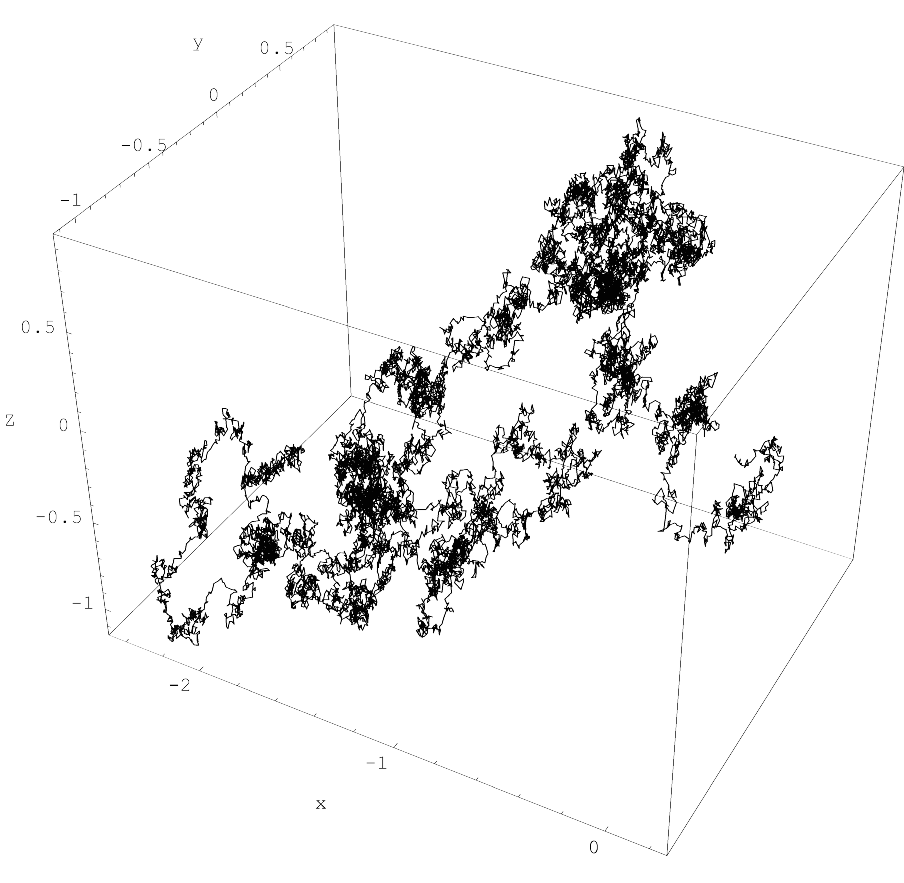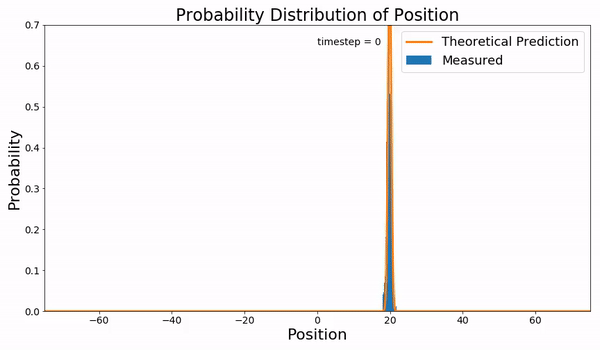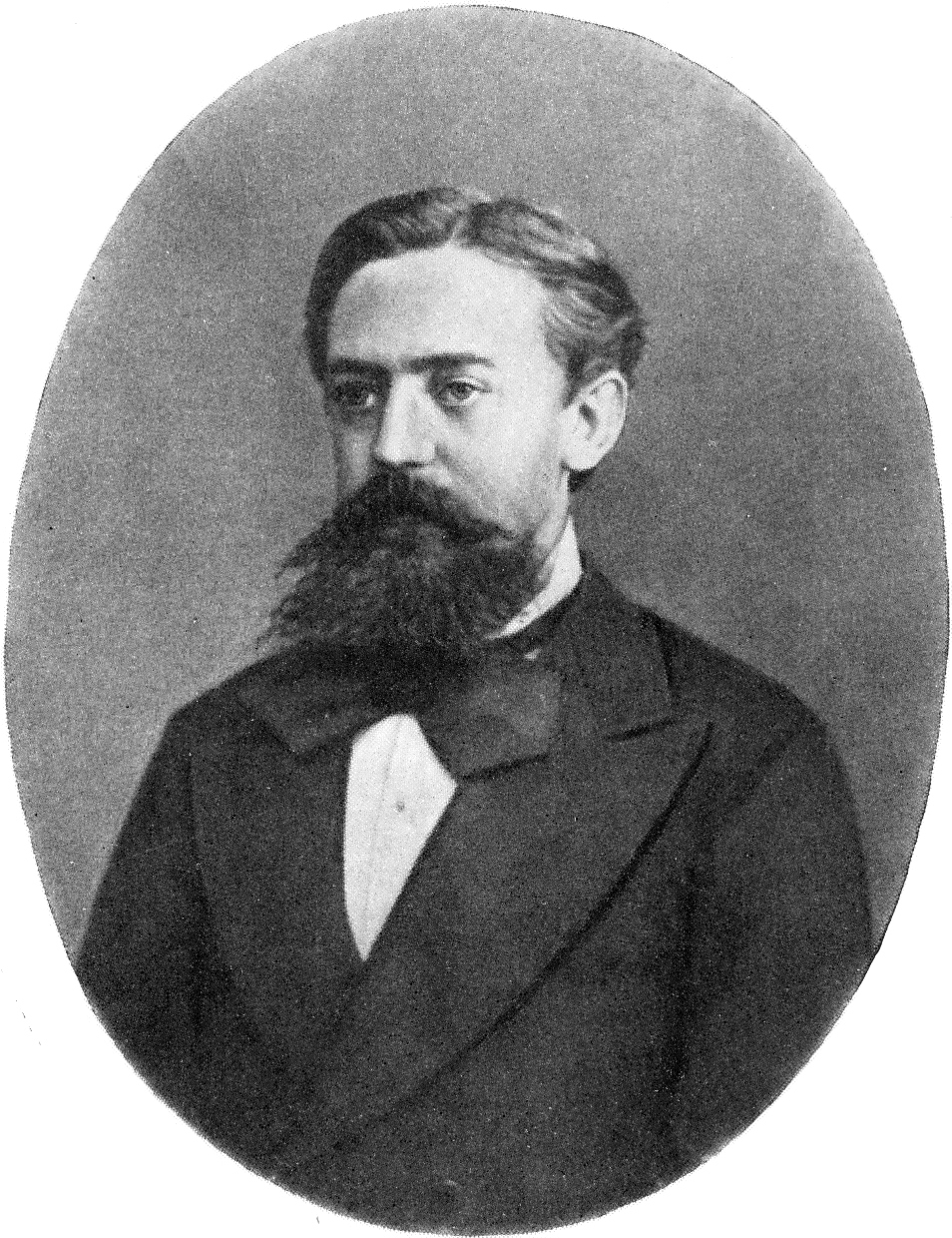|
Chapman–Kolmogorov Equation
In mathematics, specifically in the theory of Markovian stochastic processes in probability theory, the Chapman–Kolmogorov equation(CKE) is an identity relating the joint probability distributions of different sets of coordinates on a stochastic process. The equation was derived independently by both the British mathematician Sydney Chapman and the Russian mathematician Andrey Kolmogorov. CKE prominently used in recent Variational Bayesian methods. Mathematical description Suppose that is an indexed collection of random variables, that is, a stochastic process. Let :p_(f_1,\ldots,f_n) be the joint probability density function of the values of the random variables ''f''1 to ''fn''. Then, the Chapman–Kolmogorov equation is :p_(f_1,\ldots,f_)=\int_^p_(f_1,\ldots,f_n)\,df_n i.e. a straightforward marginalization over the nuisance variable. (Note that nothing yet has been assumed about the temporal (or any other) ordering of the random variables—the above equation applies ... [...More Info...] [...Related Items...] OR: [Wikipedia] [Google] [Baidu] |
Mathematics
Mathematics is an area of knowledge that includes the topics of numbers, formulas and related structures, shapes and the spaces in which they are contained, and quantities and their changes. These topics are represented in modern mathematics with the major subdisciplines of number theory, algebra, geometry, and analysis, respectively. There is no general consensus among mathematicians about a common definition for their academic discipline. Most mathematical activity involves the discovery of properties of abstract objects and the use of pure reason to prove them. These objects consist of either abstractions from nature orin modern mathematicsentities that are stipulated to have certain properties, called axioms. A ''proof'' consists of a succession of applications of deductive rules to already established results. These results include previously proved theorems, axioms, andin case of abstraction from naturesome basic properties that are considered true starting points of ... [...More Info...] [...Related Items...] OR: [Wikipedia] [Google] [Baidu] |
Markov Property
In probability theory and statistics, the term Markov property refers to the memoryless property of a stochastic process. It is named after the Russian mathematician Andrey Markov. The term strong Markov property is similar to the Markov property, except that the meaning of "present" is defined in terms of a random variable known as a stopping time. The term Markov assumption is used to describe a model where the Markov assumption is assumed to hold, such as a hidden Markov model. A Markov random field extends this property to two or more dimensions or to random variables defined for an interconnected network of items. An example of a model for such a field is the Ising model. A discrete-time stochastic process satisfying the Markov property is known as a Markov chain. Introduction A stochastic process has the Markov property if the conditional probability distribution of future states of the process (conditional on both past and present values) depends only upon the present ... [...More Info...] [...Related Items...] OR: [Wikipedia] [Google] [Baidu] |
Equations
In mathematics, an equation is a formula that expresses the equality of two expressions, by connecting them with the equals sign . The word ''equation'' and its cognates in other languages may have subtly different meanings; for example, in French an ''équation'' is defined as containing one or more variables, while in English, any well-formed formula consisting of two expressions related with an equals sign is an equation. ''Solving'' an equation containing variables consists of determining which values of the variables make the equality true. The variables for which the equation has to be solved are also called unknowns, and the values of the unknowns that satisfy the equality are called solutions of the equation. There are two kinds of equations: identities and conditional equations. An identity is true for all values of the variables. A conditional equation is only true for particular values of the variables. An equation is written as two expressions, connected by an ... [...More Info...] [...Related Items...] OR: [Wikipedia] [Google] [Baidu] |
Examples Of Markov Chains
This article contains examples of Markov chains and Markov processes in action. All examples are in the countable state space. For an overview of Markov chains in general state space, see Markov chains on a measurable state space. Discrete-time Board games played with dice A game of snakes and ladders or any other game whose moves are determined entirely by dice is a Markov chain, indeed, an absorbing Markov chain. This is in contrast to card games such as blackjack, where the cards represent a 'memory' of the past moves. To see the difference, consider the probability for a certain event in the game. In the above-mentioned dice games, the only thing that matters is the current state of the board. The next state of the board depends on the current state, and the next roll of the dice. It doesn't depend on how things got to their current state. In a game such as blackjack, a player can gain an advantage by remembering which cards have already been shown (and hence which ... [...More Info...] [...Related Items...] OR: [Wikipedia] [Google] [Baidu] |
Kolmogorov Backward Equation
In probability theory, Kolmogorov equations, including Kolmogorov forward equations and Kolmogorov backward equations, characterize continuous-time Markov processes. In particular, they describe how the probability that a continuous-time Markov process is in a certain state changes over time. Diffusion processes vs. jump processes Writing in 1931, Andrei Kolmogorov started from the theory of discrete time Markov processes, which are described by the Chapman–Kolmogorov equation, and sought to derive a theory of continuous time Markov processes by extending this equation. He found that there are two kinds of continuous time Markov processes, depending on the assumed behavior over small intervals of time: If you assume that "in a small time interval there is an overwhelming probability that the state will remain unchanged; however, if it changes, the change may be radical", then you are led to what are called jump processes. The other case leads to processes such as those "repres ... [...More Info...] [...Related Items...] OR: [Wikipedia] [Google] [Baidu] |
Fokker–Planck Equation
In statistical mechanics, the Fokker–Planck equation is a partial differential equation that describes the time evolution of the probability density function of the velocity of a particle under the influence of drag forces and random forces, as in Brownian motion. The equation can be generalized to other observables as well. It is named after Adriaan Fokker and Max Planck, who described it in 1914 and 1917. It is also known as the Kolmogorov forward equation, after Andrey Kolmogorov, who independently discovered it in 1931. When applied to particle position distributions, it is better known as the Smoluchowski equation (after Marian Smoluchowski), and in this context it is equivalent to the convection–diffusion equation. The case with zero diffusion is the continuity equation. The Fokker–Planck equation is obtained from the master equation through Kramers–Moyal expansion. The first consistent microscopic derivation of the Fokker–Planck equation in the single schem ... [...More Info...] [...Related Items...] OR: [Wikipedia] [Google] [Baidu] |
Master Equation
In physics, chemistry and related fields, master equations are used to describe the time evolution of a system that can be modelled as being in a probabilistic combination of states at any given time and the switching between states is determined by a transition rate matrix. The equations are a set of differential equations – over time – of the probabilities that the system occupies each of the different states. Introduction A master equation is a phenomenological set of first-order differential equations describing the time evolution of (usually) the probability of a system to occupy each one of a discrete set of states with regard to a continuous time variable ''t''. The most familiar form of a master equation is a matrix form: : \frac=\mathbf\vec, where \vec is a column vector (where element ''i'' represents state ''i''), and \mathbf is the matrix of connections. The way connections among states are made determines the dimension of the problem; it is either *a d ... [...More Info...] [...Related Items...] OR: [Wikipedia] [Google] [Baidu] |
Matrix Multiplication
In mathematics, particularly in linear algebra, matrix multiplication is a binary operation that produces a matrix from two matrices. For matrix multiplication, the number of columns in the first matrix must be equal to the number of rows in the second matrix. The resulting matrix, known as the matrix product, has the number of rows of the first and the number of columns of the second matrix. The product of matrices and is denoted as . Matrix multiplication was first described by the French mathematician Jacques Philippe Marie Binet in 1812, to represent the composition of linear maps that are represented by matrices. Matrix multiplication is thus a basic tool of linear algebra, and as such has numerous applications in many areas of mathematics, as well as in applied mathematics, statistics, physics, economics, and engineering. Computing matrix products is a central operation in all computational applications of linear algebra. Notation This article will use the following notati ... [...More Info...] [...Related Items...] OR: [Wikipedia] [Google] [Baidu] |
Transition Probability
A Markov chain or Markov process is a stochastic model describing a sequence of possible events in which the probability of each event depends only on the state attained in the previous event. Informally, this may be thought of as, "What happens next depends only on the state of affairs ''now''." A countably infinite sequence, in which the chain moves state at discrete time steps, gives a discrete-time Markov chain (DTMC). A continuous-time process is called a continuous-time Markov chain (CTMC). It is named after the Russian mathematician Andrey Markov. Markov chains have many applications as statistical models of real-world processes, such as studying cruise control systems in motor vehicles, queues or lines of customers arriving at an airport, currency exchange rates and animal population dynamics. Markov processes are the basis for general stochastic simulation methods known as Markov chain Monte Carlo, which are used for simulating sampling from complex probability distr ... [...More Info...] [...Related Items...] OR: [Wikipedia] [Google] [Baidu] |
Markov Chain
A Markov chain or Markov process is a stochastic model describing a sequence of possible events in which the probability of each event depends only on the state attained in the previous event. Informally, this may be thought of as, "What happens next depends only on the state of affairs ''now''." A countably infinite sequence, in which the chain moves state at discrete time steps, gives a discrete-time Markov chain (DTMC). A continuous-time process is called a continuous-time Markov chain (CTMC). It is named after the Russian mathematician Andrey Markov. Markov chains have many applications as statistical models of real-world processes, such as studying cruise control systems in motor vehicles, queues or lines of customers arriving at an airport, currency exchange rates and animal population dynamics. Markov processes are the basis for general stochastic simulation methods known as Markov chain Monte Carlo, which are used for simulating sampling from complex probability dist ... [...More Info...] [...Related Items...] OR: [Wikipedia] [Google] [Baidu] |
Stochastic Process
In probability theory and related fields, a stochastic () or random process is a mathematical object usually defined as a family of random variables. Stochastic processes are widely used as mathematical models of systems and phenomena that appear to vary in a random manner. Examples include the growth of a bacterial population, an electrical current fluctuating due to thermal noise, or the movement of a gas molecule. Stochastic processes have applications in many disciplines such as biology, chemistry, ecology, neuroscience, physics, image processing, signal processing, control theory, information theory, computer science, cryptography and telecommunications. Furthermore, seemingly random changes in financial markets have motivated the extensive use of stochastic processes in finance. Applications and the study of phenomena have in turn inspired the proposal of new stochastic processes. Examples of such stochastic processes include the Wiener process or Brownian motion process, ... [...More Info...] [...Related Items...] OR: [Wikipedia] [Google] [Baidu] |
Nuisance Variable
In the theory of stochastic processes in probability theory and statistics, a nuisance variable is a random variable that is fundamental to the probabilistic model, but that is of no particular interest in itself or is no longer of any interest: one such usage arises for the Chapman–Kolmogorov equation. For example, a model for a stochastic process may be defined conceptually using intermediate variables that are not observed in practice. If the problem is to derive the theoretical properties, such as the mean, variance and covariances of quantities that would be observed, then the intermediate variables are nuisance variables. The related term nuisance factor has been used in the context of block experiments, where the terms in the model representing block-means, often called "factors", are of no interest. Many approaches to the analysis of such experiments, particularly where the experimental design is subject to randomization, treat these factors as random variables. More rece ... [...More Info...] [...Related Items...] OR: [Wikipedia] [Google] [Baidu] |






